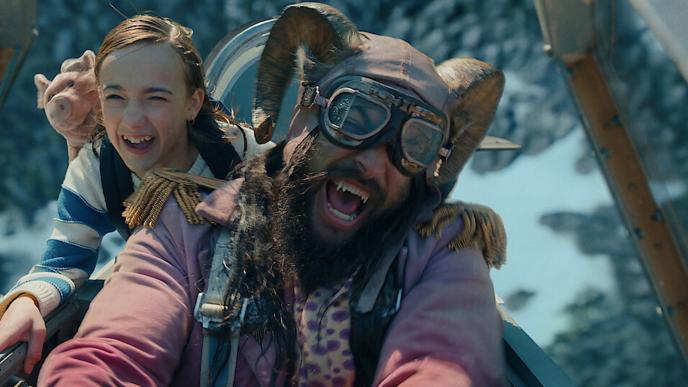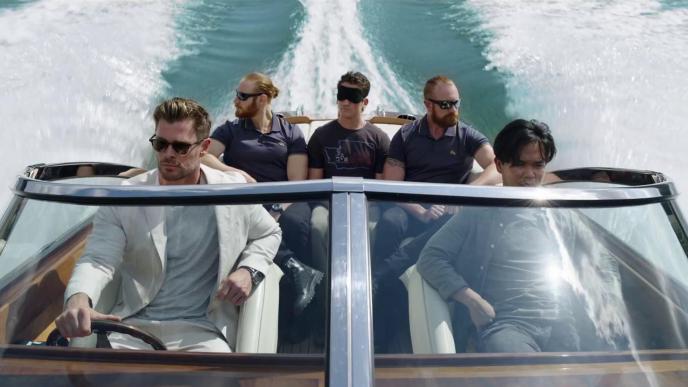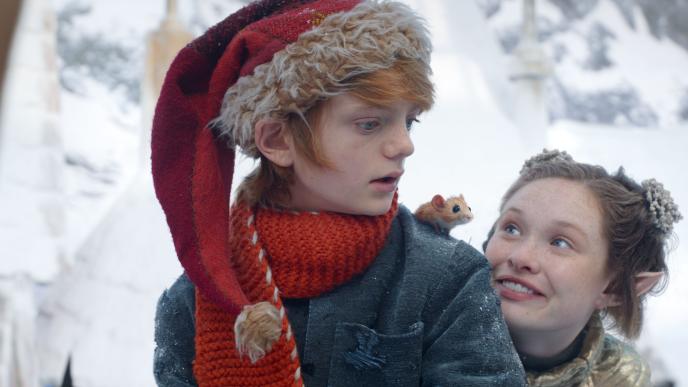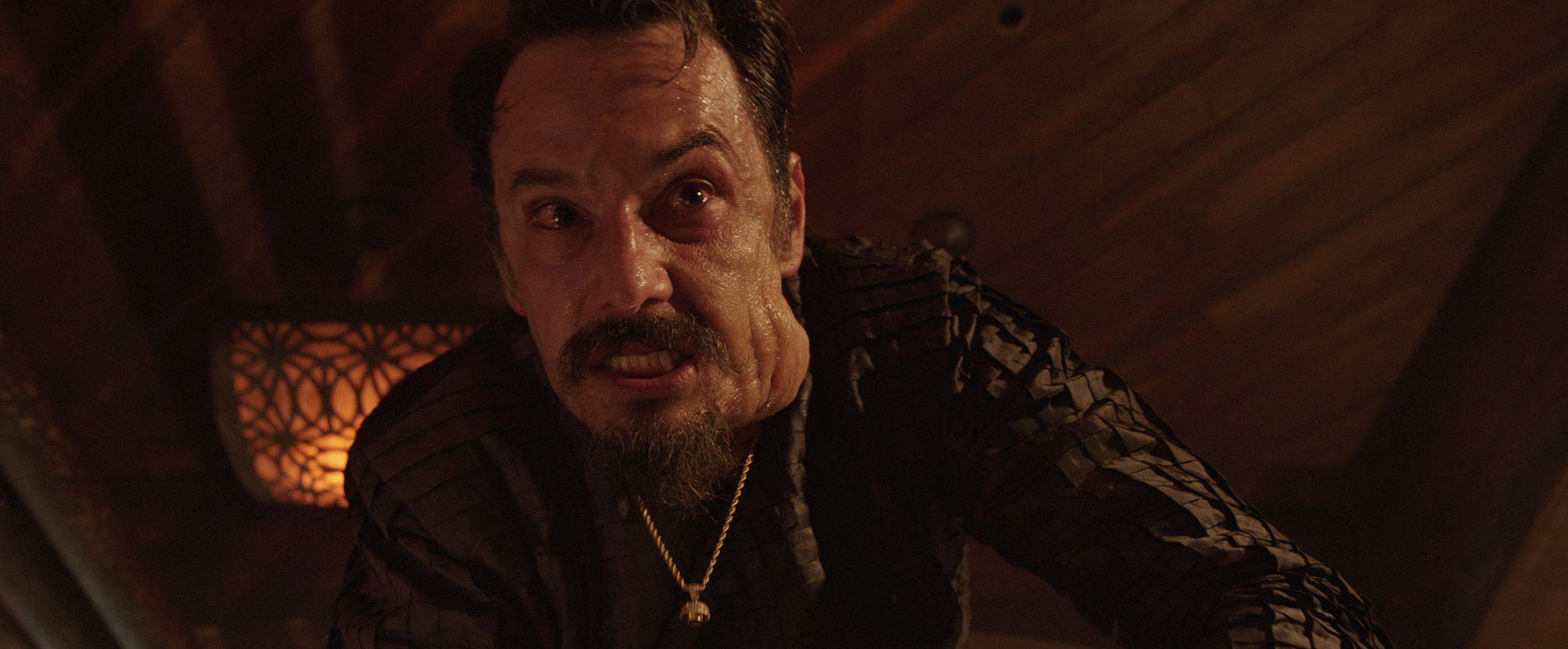

Project Power
One pill. 5 minutes. Unbelievable power.
Our team was thrilled to be involved in the creative process from early concept art through to the show’s final explosive VFX, working closely with directors Ariel Schulman and Henry Joost (Catfish, Nerve) to unlock each character’s eye-popping powers as well as high-octane action sequences, ambitious CG set builds and some innovative use of LED technology.
We found ourselves in a really enviable place with almost a blank canvas to explore the drug and its effects.
Starring Jamie Foxx, Joseph Gordon-Levitt, Dominique Fishback and Machine Gun Kelly the film throws us into a murky world where a new designer drug can, for good or for ill, unlock five minutes of latent power in the person taking it. Ivan Moran (Arrival, Ghost in the Shell) worked client-side as the show’s overall VFX supervisor, while VFX Supervisors João Sita and Matthew Twyford worked on 400+ shots that took in expertise from the studio’s concept art, vis dev and VFX teams.
“We found ourselves in a really enviable place with almost a blank canvas to explore the drug and its effects,” explains Moran. “This meant we could develop the look of the pill itself and the changes it makes to the taker’s eyes through to the stylish, jaw-dropping or occasionally flat-out gross end results. We worked really closely with Art Director Jonathan Opgenhaffen from Framestore Pre-production Services for this, concepting each sequence and signature power to give us perspective into how things would work in practise. We also made sure to root the drug’s side effects in actual science - from subatomic vibrational physics theory through to potential innate DNA from animal biology - to not only dazzle the audience but help them suspend their disbelief by giving each power a plausible, real-world backdrop.”
With Moran on-set in New Orleans for the shoot, the production and VFX teams worked hand-in-glove in an open creative dialogue to create terrifyingly realistic effects that enhanced the thrilling narrative for each gripping performance.

Frank
A key sequence sees a full-frame shot of Frank (played by Joseph Gordon-Levitt) staring into the camera as he takes - and survives - a bullet point-blank to the head. The slow-motion sequence was filmed at 800 frames per second, with the camera unflinchingly documenting every skin ripple. Every curl of gunsmoke was meticulously created and simulated in FX, referencing real gun shots filmed at over 70,000 frames per second. “The challenge was to precisely recreate the timing of the ripples and the hair movement from the plate which was achieved on set with a high-velocity blast of air,” says Sita. Referencing an armadillo’s leathery protective shell for the sequence’s distinctive look, the CFX team meticulously sculpted the folds and ripples in CG. The final touch saw the Groom team add full digital hair onto Frank, so as to perfectly time the hair lift and to disguise the constant wind through the actor’s hair from the air gun used on set.
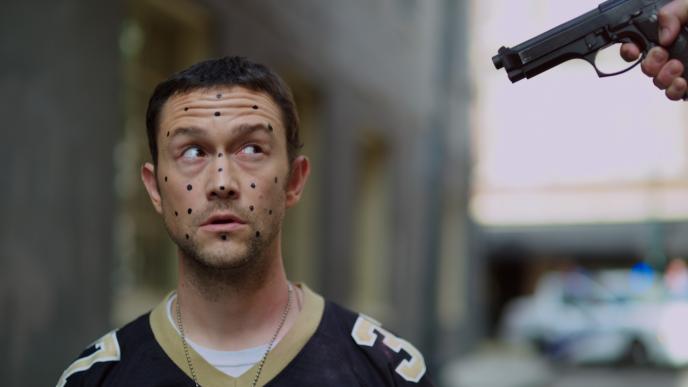

Art
Art, played by Jamie Foxx, has powers based on vibrational physics and how infrasonic soundwaves interact with physical surfaces and can theoretically change the state of water into plasma - a skillset that saw the Framestore team deep dive into the world of Newtonian fluids and cymatics for inspiration. “Art’s powers were fascinating to research and the patterns we uncovered are truly beautiful,” says Opgenhaffen. The results might be beautiful, but they are also devastating, with Art unleashing a huge destructive blast that put Framestore’s creatives through their paces. “Art’s power sequence is easily the most challenging sequence I have ever attempted to devise, plan and film in my career,” says Moran of this deceptively complex sequence. “The shots were filmed at night, on location, in rain, at extremely high camera speeds which was immensely challenging given the lack of light. Many background details were added in VFX so that we could warp and distort them to show the shockwave exploding away from Art.” While the force of Art’s power rather speaks for itself, the team also created CG smoke, fire, steam and vapor of the aftermath, as well as building out the environment with a huge number of shipping containers. “The lengths we went to achieving as much as possible in camera are truly extraordinary and complemented by devastatingly impressive VFX work,” concludes Moran.
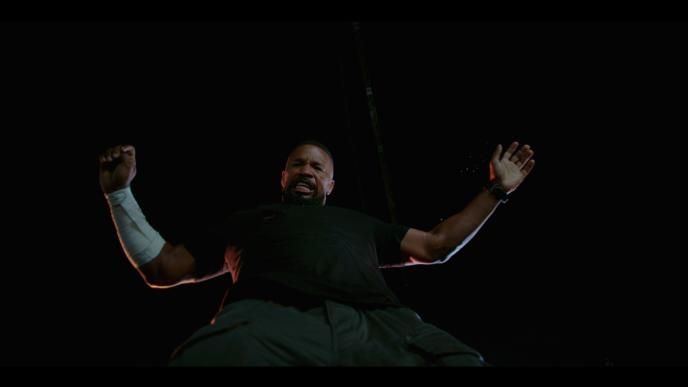
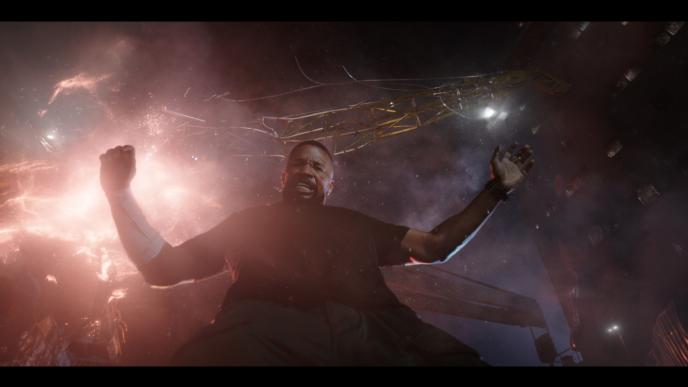
Art’s power sequence is easily the most challenging sequence I have ever attempted to devise, plan and film in my career.
Newt
One of Project Power’s most eye-catching sequences involves Newt - better known as rapper Machine Gun Kelly - boiling at a subatomic level and transforming the air around him into pure fire via a phenomenon known as superheated steam as he grapples Art. “Not only did this involve overcoming the perennial film-making challenge of convincingly setting a cast member on fire, but the sequence took place over 100 shots, in nine different locations and culminates with the characters being dunked underwater,” explains Twyford. With fire being a famously difficult light source, Moran struck upon an innovative solution to ensure the fight could be as realistic as possible. Working closely with the on-set prosthetics and electric team, Moran developed fully-programmed strips of flickering LED lights which were applied as a layer to the actor’s body encased in the many fine layers of a head-to-toe prosthetic suit. "The process took up to eight hours to install and MGK chose to wear it three days in a row to not have to go through it twice,” recalls Moran. “As well as providing a flickering, fire-like light source on the actor, the suit also illuminated walls and objects as he ran past them and Art, as MGK grappled with Jamie on set for true believability. We also had a stunt actor - actually on fire this time - recreate the scene to provide real-life reference.”
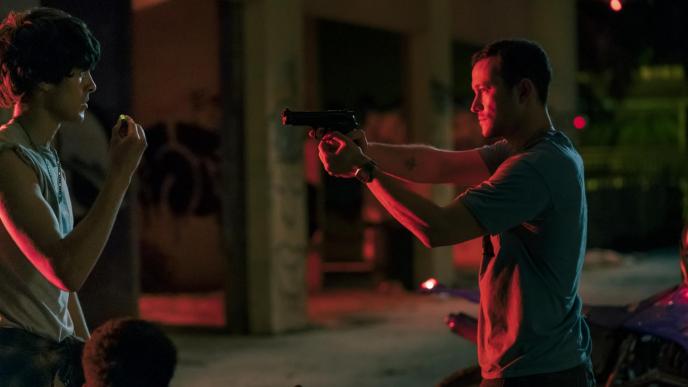
Not only did this involve overcoming the perennial film-making challenge of convincingly setting a cast member on fire, but the sequence took place over 100 shots, in nine different locations and culminates with the characters being dunked underwater.
Frozen Girl
Frozen Girl, played by Jazzy De Lisser, sees her body transform into ice. Shot in one single two-minute take comprising some 2,000 frames, this sequence posed a major challenge for the VFX team. “The amount of detail in that shot is incredible,” says Moran. “Jazzy is constantly moving, trying to escape from a circular tank while ice crystals grow over her skin and her breath fogs the glass.” The startling sequence took some nine months to realise in total. Sita explains, “body-tracking worked with rigging to preserve Jazzy’s performance, while our FX team drove a tremendous amount of texture work. We had to remove the reflections of the camera crew from the glass while also matching the multiple flashing light sources from the room outside the tank. We played the shot in realtime and every single frame had 70 lights that needed to be manually art directed, colored, calibrated and matched from camera references so that all ice on her body could properly interact with her skin. This level of detail might seem intense, but it means you achieve a level of realism that keeps you locked into the spectacle and puts the spotlight on the actor’s performance.”
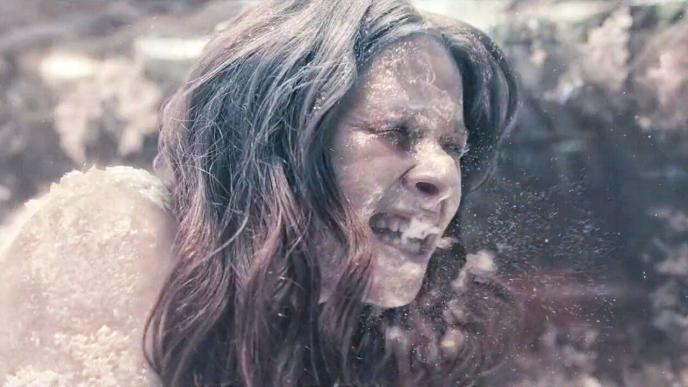
His level of detail might seem intense, but it means you achieve a level of realism that keeps you locked into the spectacle and puts the spotlight on the actor’s performance.
Camo Guy
One of the sequences sees the chameleonic Camo Guy (Cory DeMeyers) robbing a bank - but as his stress increases, so does his lack of control over his temporary abilities. Camo Guy’s powers were inspired by the humble cuttlefish, which has the ability to mimic its surroundings. “This dynamic strobing effect was created from skin shader passes, and compositing artists were key in driving the look and feel of Camo Guy’s escapade, selecting elements from his environment that stuck to his body,” explains CG Supervisor Kevin Sears. “It was a truly collaborative experience, with Framestore’s matchmove team working on body control data and lookdev artists adding skin and sweat details that get a reflected sheen on his skin.”
Sita explains, “the work on the character was tested before main photography as a 2D based look which proved that Camo Guy would have an interesting effect, but lacked some of the lighting and more dynamic patterns in its cells. We called on FX and lookdev to achieve that additional motion and subsurface look with the texture and reflections embedded in his body in compositing. We matched the plate for lighting and adjusted his skin wetness and specularity to get a more interesting shape.”
Biggie
Biggie’s superpower (Rodrigo Santoro) sees him almost double in size, transforming into an imposing, asymmetrical beast-like figure that towers over his surroundings. “The plates were shot in a miniature set,” explains Sita. “This helped us work out how big the actor should be, and how he’d be interacting in an environment where he looks much taller.” Working with these plates, Framestore’s tracking and CFX teams performed detailed plate augmentations as they matched Biggie’s on-set prosthetics with a series of CG body parts and muscle jiggles. The FX team created gruesome tumors and intricate veins under his skin, deforming Biggie’s face to one side to finalize the grotesque transformation.
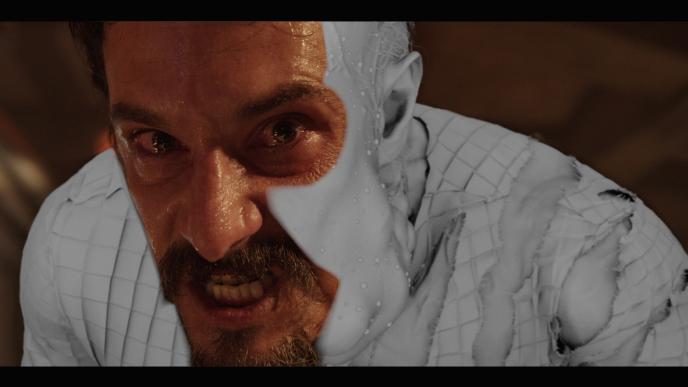
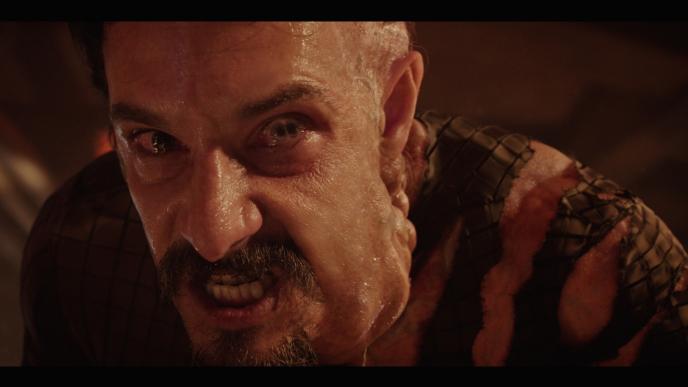
The art of vis dev
The team began by designing the pill, including the drug’s reactive eye effect — a key indicator that the character had succumbed to its superpowers. Framestore’s vis dev team rebuilt the human eye with its intricate iris strands and blood vessels using fluid dynamics and volumes, and airdropped it to circumvent the traditional VFX pipeline. “The challenge was to make it look like it’s freezing in a way that isn’t terrifying — it was massively complicated and looks stunning,” beams Twyford. Throughout the whole process, vis dev had a key role in establishing the look and the steps the characters would go through. For Frozen Girl, from the initial concept of the sequence to the last iterations with the character fully frozen, vis dev went through various looks that ranged from real and gruesome (involving frostbite and peeling skin) to a death that was still gruesome but far more ‘elegant’, and more reliant on both the ice FX and the actor’s performance. “It was incredible to see the collaborative process, with departments spurring each other on in order to achieve an amazing final look,” concludes Sita.
It was incredible to see the collaborative process, with departments spurring each other on in order to achieve an amazing final look.

Press
Project Power: How Framestore ‘Finaled' The Film Mid-Pandemic
VFX Voice
Things We Saw Today: The Trailer for Netflix’s Project Power Is Lit. Like Literally on Fire.
The Mary Sue
Get an electrifying first look at Jamie Foxx's Netflix thriller, Project Power
Entertainment Weekly
Netflix’s Project Power trailer is like Limitless for superheroes
Polygon
Netflix New-Release ‘Project Power’ with blockbuster action that won’t disappoint
Gizmo Story
Project Power is directing duo Ariel Schulman and Henry Joost's most high-profile project to date
Indie Wire
Netflix’s Project Power Clip Makes Joseph Gordon-Levitt Bulletproof And It’s Awesome
Cinema Blend
Fire, prosthetics, LEDs and VFX: ‘Project Power’
Before and afters
Interview with ‘Project Power’ VFX Team Ivan Moran and João Sita
What's on Netflix
This is how Netflix Project Power characters gained their superpowers
RedShark News
Q&A with Project Power's Overall VFX Supervisor Ivan Moran
Art of VFX
Netflix’s Project Power, and the Creatures That Inspired Each Ability
Den of Geek
Project Power VFX Artists Share How They Pulled Off the Netflix Original’s Superb Visuals
Fictionphile
How Project Power turned Joseph Gordon-Levitt into a superhero - Exclusive
Looper
How Project Power turned Jamie Foxx into a superhero - Exclusive
Looper
The VFX Superheroes Making Superpowers for ‘PROJECT POWER’
Before and afters
Reviews
'There are some genuinely cool super-power effects—a fiery fight in a dingy apartment complex is the highlight'. - Vanity Fair
'Directors Henry Joost and Ariel Schulman keep things pretty tight and get help from some extremely good visual effects makers' - The Eagle
'Inside Netflix’s ‘Project Power,’ a ‘refreshing’ take on the popular superhero movie genre' - Fortune

